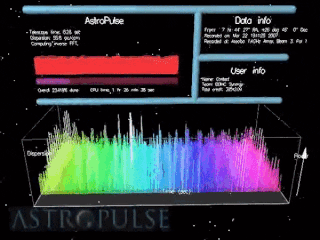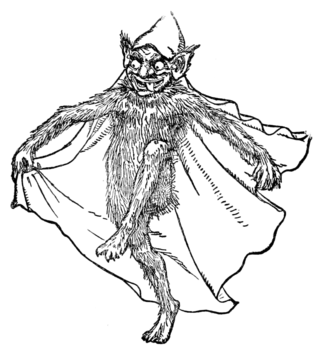
A bestiary is a compendium of beasts. Originating in the ancient world, bestiaries were made popular in the Middle Ages in illustrated volumes that described various animals and even rocks. The natural history and illustration of each beast was usually accompanied by a moral lesson. This reflected the belief that the world itself was the Word of God and that every living thing had its own special meaning. For example, the pelican, which was believed to tear open its breast to bring its young to life with its own blood, was a living representation of Jesus. Thus the bestiary is also a reference to the symbolic language of animals in Western Christian art and literature.

Bahamut, or Bahamoot, according to Zakariya al-Qazwini, is a monster that lies deep below, underpinning the support structure that holds up the earth.
The Afanc is a lake monster from Welsh mythology. Its exact description varies; it is described variously as resembling a crocodile, beaver or dwarf-like creature, or a platypus and is sometimes said to be a demon. The lake in which it dwells also varies; it is variously said to live in Llyn Llion, Llyn Barfog, near Brynberian Bridge or in Llyn yr Afanc, a lake near Betws-y-coed that was named after the creature.
An astronomical radio source is an object in outer space that emits strong radio waves. Radio emission comes from a wide variety of sources. Such objects are among the most extreme and energetic physical processes in the universe.

The crocotta or corocotta, crocuta, or leucrocotta is a mythical dog-wolf of India or Aethiopia, linked to the hyena and said to be a deadly enemy of men and dogs.

The Questing Beast, or the Beast Glatisant, is a cross-animal monster appearing in many medieval texts of Arthurian legend and modern works inspired by them. In the French prose cycles, and consequently in the quasi-canon of Le Morte d'Arthur, the hunt for the Beast is the subject of quests futilely undertaken by King Pellinore and his family and finally achieved by Sir Palamedes and his companions.

Astropulse is a volunteer computing project to search for primordial black holes, pulsars, and extraterrestrial intelligence (ETI). Volunteer resources are harnessed through Berkeley Open Infrastructure for Network Computing (BOINC) platform. In 1999, the Space Sciences Laboratory launched SETI@home, which would rely on massively parallel computation on desktop computers scattered around the world. SETI@home utilizes recorded data from the Arecibo radio telescope and searches for narrow-bandwidth radio signals from space, signifying the presence of extraterrestrial technology. It was soon recognized that this same data might be scoured for other signals of value to the astronomy and physics community.

The griffin, griffon, or gryphon is a legendary creature with the body, tail, and back legs of a lion, and the head and wings of an eagle with its talons on the front legs.

Brandon Mull is an American author best known for his children's fantasy series, Fablehaven, as well as Dragonwatch, The Candy Shop War, the Beyonders trilogy, and the Five Kingdoms series. He also began the Spirit Animals series.

In heraldry, the term attitude describes the position in which a figure is emblazoned as a charge, a supporter, or as a crest. The attitude of a heraldic figure always precedes any reference to the tincture of the figure and its parts. Some attitudes apply only to predatory beasts, exemplified by the beast most usual to heraldry – the heraldic lion; other terms apply to docile animals, such as the doe, usually emblazoned as a "hind".

A goblin is a small, grotesque, monstrous creature that appears in the folklore of multiple European cultures. First attested in stories from the Middle Ages, they are ascribed conflicting abilities, temperaments, and appearances depending on the story and country of origin, ranging from mischievous household spirits to malicious, bestial thieves. They often have magical abilities similar to a fairy or demon, such as the ability to shapeshift.

In radio astronomy, a fast radio burst (FRB) is a transient radio pulse of length ranging from a fraction of a millisecond, for an ultra-fast radio burst, to 3 seconds, caused by some high-energy astrophysical process not yet understood. Astronomers estimate the average FRB releases as much energy in a millisecond as the Sun puts out in three days. While extremely energetic at their source, the strength of the signal reaching Earth has been described as 1,000 times less than from a mobile phone on the Moon.
In Chinese mythology, the xiao is the name of several creatures, including the xiao "a long-armed ape" or "a four-winged bird" and shanxiao "mischievous, one-legged mountain spirit". Furthermore, some Western sources misspell and misconstrue the older romanization hsiao as "hsigo" [sic] "a flying monkey".

In radio astronomy, perytons are short man-made radio signals of a few milliseconds resembling fast radio bursts (FRB). A peryton differs from radio frequency interference by the fact that it is a pulse of several to tens of millisecond duration which sweeps down in frequency. They are further verified by the fact that they occur at the same time in many beams, indicating that they come from Earth, whereas FRB's occur in only 1 or 2 of the beams, indicating that they are of galactic origin. The first signal occurred in 2001 but was not discovered until 2007. First detected at the Parkes Observatory, data gathered by the telescope also suggested the source was local. The signals were found to be caused by premature opening of a microwave oven door nearby.











